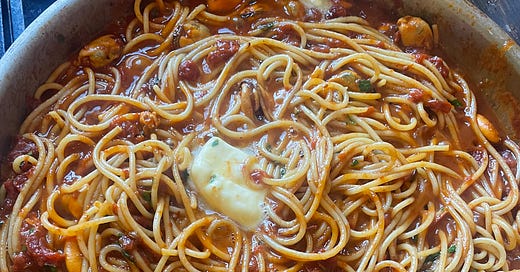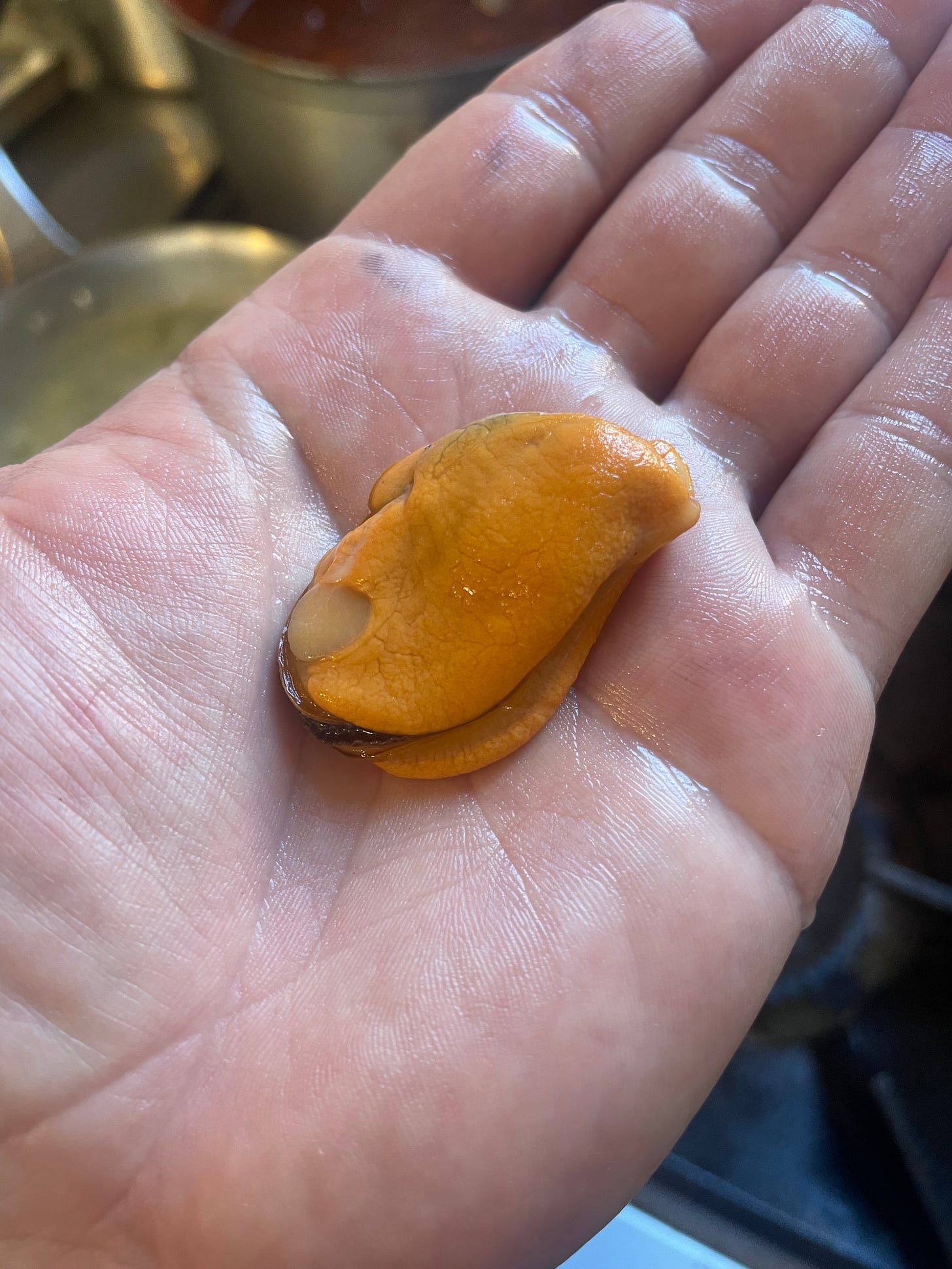Pretty straightforward stuff from me this time, route one deliciousness, in the form of pasta with a spicy mussel and tomato sauce. This sauce is one of the best pasta sauces I know: deeply savoury, spicy, aromatic and fresh, as garlicky as you please, hot enough with dried chilli to make you sit up and take notice, lively with fennel and chopped parsley, and the spaghetti still with a satisfying bounce and bite, glistening with olive oil on the surface but secretly bound with lashings of butter.
Last week in the café I had a few kilos of mussels to use. As usual, when I ordered them I didn’t quite know how I would end up using them. My first thought was a delicious thing I happened upon almost accidentally earlier in the year, a dish that I cobbled together for staff lunch that sounds unlikely but was an immediate smash hit: mussels, roast cabbage, barley and tahini. Mussels and tahini is not an obvious combination for us here in the West, but if you’ve ever been to Istanbul you will have seen mussels being threaded onto skewers, beer-battered and fried in cauldrons of bubbling oil. The deep-fried mussels are eaten with a lemony sharp tahini sauce; delicious, like seafood popcorn, and especially good in a sandwich, might I add.
But my tahini sauce was re-purposed to make a tahini yogurt for my asparagus pilaf (natch), and the whole barley/cabbage assembly felt a bit too beige for the sunny Spring weather, so I was back to the drawing board. I thought about making a mussel soup - should it be like the Portuguese make it, with tomato sauce, coriander and thickened with bread into a delicious pap? Very nice, but maybe a bit niche. Or should I go more Italian, with some celery, tomato and white wine and some bruschetta rubbed with garlic tucked into the side of the bowl? Also yummy, but was this boring? In the end, dear reader, I made neither.
I’d been flirting for a while with cooking some pasta at the café, but dried pasta is a tricky one for a restaurant service. A dried noodle takes 10-12 minutes to cook from scratch, so restaurant chefs often prefer fresh pasta instead, and with the right preparation you can kick out the whole dish start-to-finish in 3 minutes flat. If I had the right flour, I would make some fresh tagliatelle or tagliarini for this, and I would encourage you to do the same, but the flour I have to use at the café is slightly unsuitable for pasta making, so dried it had to be.
To cut down the cooking time for service, I had to par-cook my dried pasta, which in general is an absolute nightmare for a restaurant cook. Once I dunked the lot into a basin of cold water to arrest the cooking, only to see the noodles break into tiny pieces with the shock of the temperature change, destined only for the bin. It is easy also to overcook: you might have removed it from the cooking water while very al dente, but if you don’t rinse the pasta with cold water (which removes most of the essential starch that helps the sauce cling to the noodle), then the pasta will continue cooking slowly in the heat of the kitchen, and within half an hour or so you will be on the way to a congealed mushy mess. Best then, to make this at home. Lucky you!
The real star here, anyway, is the sauce. I would eat this with any kind of noodle: fresh egg tagliatelle is lovely, if you have a good source nearby or can be bothered to make them at home, or else I would go for dried linguine or spaghetti. If you don’t fancy pasta, this is also very delicious on top of a slice of crisp toast, less of a canapé and more of a quick lunch, maybe with a salad after.
Keep reading with a 7-day free trial
Subscribe to Garlic, Mint & Sweet Basil to keep reading this post and get 7 days of free access to the full post archives.





